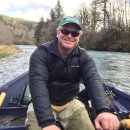Coded-wire-tags (CWT) and passive integrated transponder (PIT) tags are used extensively throughout the Columbia River Basin to address a wide variety of management and research questions. A recent study by Knudsen et al. (2009) found that dual-tagged (CWT and PIT-tagged) hatchery spring Chinook salmon smolts released in the Yakima River had lower smolt-to-adult return rates (SARs) compared to CWT smolts, indicating that PIT-tags may impart a survival bias relative to smolts tagged with CWTs. Given the widespread use of CWT and PIT-tags, further evaluations of potential tag effects would be informative for quantifying the level of bias, if present, associated with each of these two tag types. Towards this end, we initiated the PIT-Tag Effects Study (PTES) at Carson National Fish Hatchery (NFH) with the marking of the brood year 2009 release. The objectives are 1) to determine the effects of PIT-tags on spring Chinook salmon SARs and 2) to determine PIT-tag loss rates throughout the complete salmon life-cycle.
Publication date
Type of document
Annual Report
Facility
Program
Species
FWS Focus
FWS and DOI Region(s)





